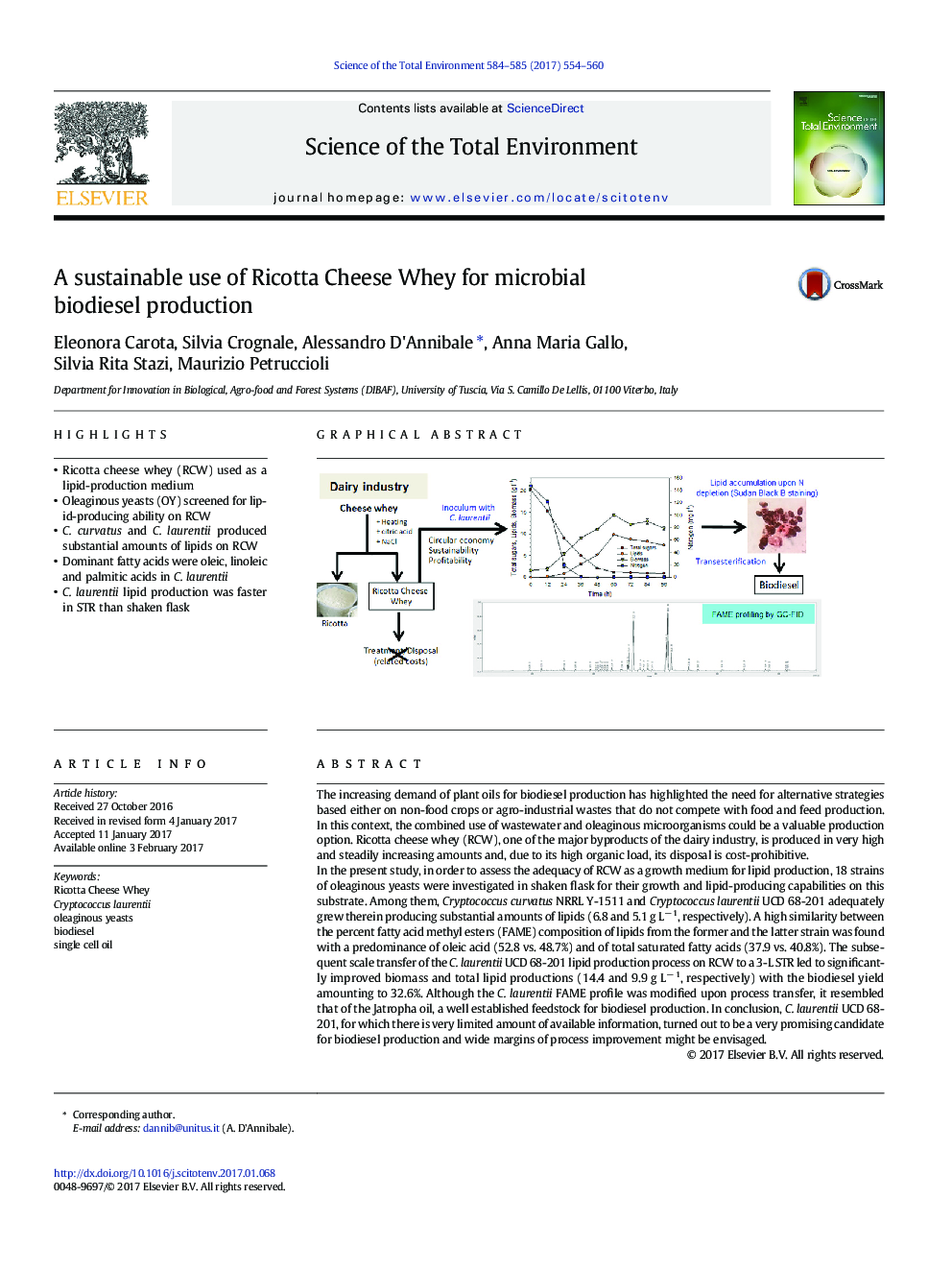| کد مقاله | کد نشریه | سال انتشار | مقاله انگلیسی | نسخه تمام متن |
|---|---|---|---|---|
| 5751896 | 1619708 | 2017 | 7 صفحه PDF | دانلود رایگان |
- Ricotta cheese whey (RCW) used as a lipid-production medium
- Oleaginous yeasts (OY) screened for lipid-producing ability on RCW
- C. curvatus and C. laurentii produced substantial amounts of lipids on RCW
- Dominant fatty acids were oleic, linoleic and palmitic acids in C. laurentii
- C. laurentii lipid production was faster in STR than shaken flask
The increasing demand of plant oils for biodiesel production has highlighted the need for alternative strategies based either on non-food crops or agro-industrial wastes that do not compete with food and feed production. In this context, the combined use of wastewater and oleaginous microorganisms could be a valuable production option. Ricotta cheese whey (RCW), one of the major byproducts of the dairy industry, is produced in very high and steadily increasing amounts and, due to its high organic load, its disposal is cost-prohibitive.In the present study, in order to assess the adequacy of RCW as a growth medium for lipid production, 18 strains of oleaginous yeasts were investigated in shaken flask for their growth and lipid-producing capabilities on this substrate. Among them, Cryptococcus curvatus NRRL Y-1511 and Cryptococcus laurentii UCD 68-201 adequately grew therein producing substantial amounts of lipids (6.8 and 5.1 g Lâ 1, respectively). A high similarity between the percent fatty acid methyl esters (FAME) composition of lipids from the former and the latter strain was found with a predominance of oleic acid (52.8 vs. 48.7%) and of total saturated fatty acids (37.9 vs. 40.8%). The subsequent scale transfer of the C. laurentii UCD 68-201 lipid production process on RCW to a 3-L STR led to significantly improved biomass and total lipid productions (14.4 and 9.9 g Lâ 1, respectively) with the biodiesel yield amounting to 32.6%. Although the C. laurentii FAME profile was modified upon process transfer, it resembled that of the Jatropha oil, a well established feedstock for biodiesel production. In conclusion, C. laurentii UCD 68-201, for which there is very limited amount of available information, turned out to be a very promising candidate for biodiesel production and wide margins of process improvement might be envisaged.
134
Journal: Science of The Total Environment - Volumes 584â585, 15 April 2017, Pages 554-560
